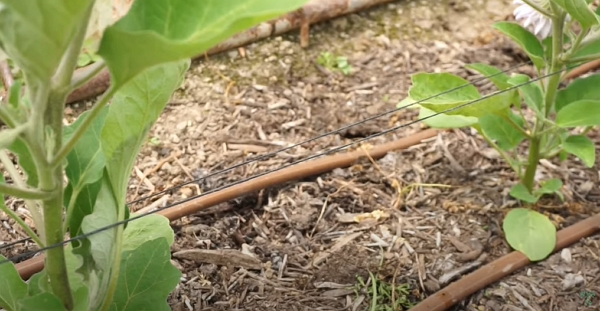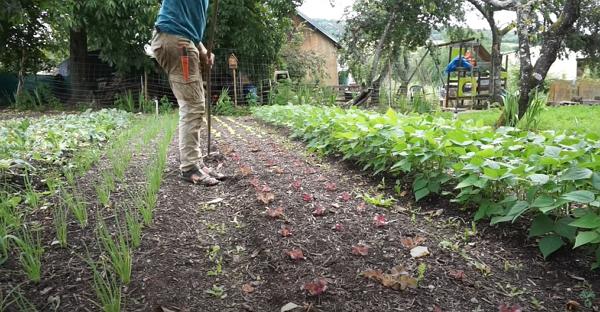We become quite busy in June with some harvesting, more sowing and weeding. Let’s look at how to optimize each task.
Thanks to Moreno for sharing his wisdom and knowledge! I wrote the following notes watching the video published on The Dutch Farmer’s channel.
You can watch it using this YouTube link.
Harvesting lettuce
The harvest of lettuce is simple, yet, you can perform it in such a way that will help enrich the soil.
Like Moreno, I cut my lettuce at the ground level. This lets the root to rot in the soil, providing food for the soil’s web.
The important part to remember, though: cut low enough to prevent a new sprouting of the lettuce.
Moreno cuts all the lettuces he needs at once before performing a first basic cleaning of the bottom of each lettuce from the damaged and wilted leaves.
As usual, in market gardening, keep track of:
- what you harvested,
- where you harvested the crops from
- the date,
- the quantity
Use a garden journal
Moreno shares some details about the journals that he keeps up with.
It allows you to record all the important information from the farm.
For example, in addition to the information above, it’s a good idea to record:
- the number of days to maturity of crops depending on the period of the year
- the time to perform certain tasks
The goal is to gather the information will help make the market gardening more profitable.
Coming back to the lettuce, it’s important to lower the temperature of the salad to keep fresh longer.
Moreno performs the task of using a cold-water bath, plunging the lettuce’s heads upside down in water for a couple of seconds.
At the same time, it helps clean up the dirt.
See the process at 2:30 in the vlog.
Leaving the lettuces to drip out for a while is important after the washing
Eggplant and pepper support system
Why do you need support for eggplants and peppers? In the fruits are big, the plant may not stay up because of the heavy load.
Moreno uses wood stakes that he sets every 5 plants.

Then, every 25 cm, as the plant grows, he sets 2 strings, in each side of the plant that will hold it over time.

Weeding
Who wants to weed? Not me.
Personal note
Just yesterday, I spent 1h15 weeding. What Moreno shares here isn’t applicable to all situations.
However, this year, I spent the time covering with a big amount of cardboard and woodchips the alleys of my garden and it has made a big difference so far.
There is still weeds coming out. But the roots are shallow and the weeds are really easy to pull up, especially the bindweed and couch grass.
Moreno uses two methods:
- a tick layer of compost, of about 10 cm, for the cultivated areas,
- a tick layer of woodchip, of about 5 cm, for the pathways.
This method doesn’t remove all weeds nor does it prevent weeds to grow. But it reduces a lot of the amount of them, resulting in a much lower time consumption weeding out the garden.
For market gardening, the no-dig approach really brings its benefits to keep a clean and weed-free garden. It’s important when you need to spend time sowing, planting and harvesting rather than weeding.
Moreno weeds his garden 4 times a year, usually when he replaces a harvested crop with the next crop to sow or plant.
The key to weed-free garden
Never let weeds get established.
If a weed goes to seed, remove it and keep a good eye on that area to remove the new weeds from that area.
Another trick Moreno shares: for the edges, cover them with landscape fabric and a good 5 cm of woodchips.
Personal note
On my property, we have a lot of historical weeds:
- couch grass
- bindweeds
- brambles
Those are the most difficult weeds to get rid of.
Like I said above, I’m trying to weed them out using the no-dig approach as well using cardboard (from Charles Dowding’s tips) and woodchips.
It will take a few years to reach a point where the weeds are manageable.
So far this year, the bindweed is what I see the most. The funny thing is that it runs its roots below the cardboard until it can get out.
It’s therefore very easy to pull them out, and a long string of root with it.
I’ll keep on adding more cardboard and woodchips on top, which will build up a good soil structure and will kill the weeds.
You liked this article? Consider subscribing to help me write more :)
